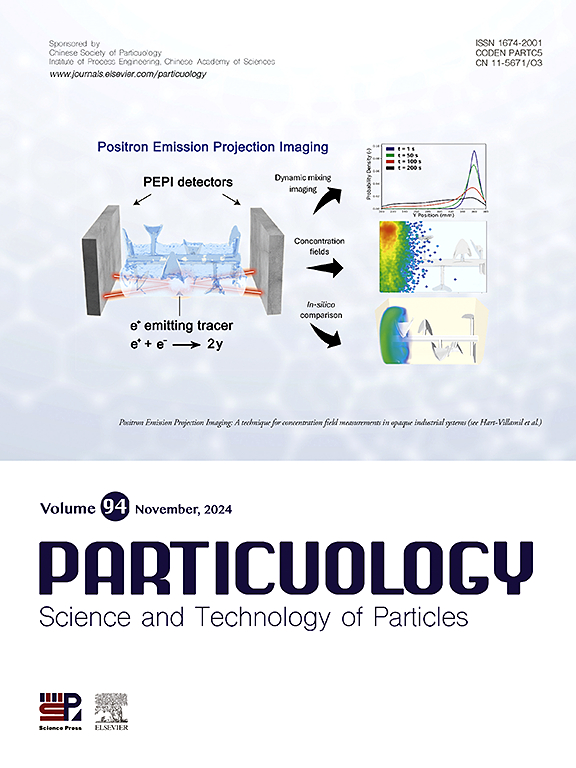Synergistically enhanced capture of perfluorooctanoic acid using a novel dual metal-organic framework adsorbent
IF 4.1
2区 材料科学
Q2 ENGINEERING, CHEMICAL
引用次数: 0
Abstract
Metal-Organic Framework (MOF) have gained widespread attention as potential adsorbents for the removal of perfluorooctanoic acid (PFOA). However, single-component MOF often exhibit limitations in adsorption capacity, functionality, and pore structure. Hereby, we innovatively designed and synthesized a dual-metal core-shell MOF composite adsorbent, MIL-101(Cr)@ZIF-8 (a chromium-zinc bimetallic MOF, CZDM), which exhibits an excellent adsorption removal performance of PFOA from aqueous solutions. The results showed that the CZDM composite material has a high specific surface area (2091 m2/g), with pore structures exhibiting typical micropores (∼1.16 nm) and mesopores (∼3.4 nm), which are crucial for the efficient adsorption of PFOA. SEM and TEM images revealed that CZDM has a uniform core-shell morphology, with MIL-101(Cr) as the core and ZIF-8 as the shell, maintaining a stable and intact structure. EDX analysis further confirmed the successful incorporation of Cr and Zn elements. Batch experiments evaluated the effects of temperature, solution pH, and PFOA concentration on adsorption efficiency. The results demonstrated that the CZDM-3 adsorbent exhibited rapid adsorption kinetics and good PFOA removal efficiency across a wide pH range. The superior adsorption performance of CZDM is attributed to the synergistic effect of the dual-metal active sites, optimized pore structure, electrostatic interactions, and coordination bonds. The maximum adsorption capacity for PFOA reached 625.5 mg/g, with equilibrium achieved within 60 min, outperforming some related reported adsorbents. The experimental data of the adsorption process fit well with both Langmuir adsorption isotherms and pseudo-second-order kinetics models, indicating that the adsorption process is spontaneous, endothermic, and accompanied by an increase in entropy. Notably, even after five cycles, the CZDM material maintained high removal efficiency toward PFOA. This study advances a new synthesizing strategy of the MOF@MOF, and the CZDM exhibits a potential application in PFOA elimination from water.

求助全文
约1分钟内获得全文
求助全文
来源期刊

Particuology
工程技术-材料科学:综合
CiteScore
6.70
自引率
2.90%
发文量
1730
审稿时长
32 days
期刊介绍:
The word ‘particuology’ was coined to parallel the discipline for the science and technology of particles.
Particuology is an interdisciplinary journal that publishes frontier research articles and critical reviews on the discovery, formulation and engineering of particulate materials, processes and systems. It especially welcomes contributions utilising advanced theoretical, modelling and measurement methods to enable the discovery and creation of new particulate materials, and the manufacturing of functional particulate-based products, such as sensors.
Papers are handled by Thematic Editors who oversee contributions from specific subject fields. These fields are classified into: Particle Synthesis and Modification; Particle Characterization and Measurement; Granular Systems and Bulk Solids Technology; Fluidization and Particle-Fluid Systems; Aerosols; and Applications of Particle Technology.
Key topics concerning the creation and processing of particulates include:
-Modelling and simulation of particle formation, collective behaviour of particles and systems for particle production over a broad spectrum of length scales
-Mining of experimental data for particle synthesis and surface properties to facilitate the creation of new materials and processes
-Particle design and preparation including controlled response and sensing functionalities in formation, delivery systems and biological systems, etc.
-Experimental and computational methods for visualization and analysis of particulate system.
These topics are broadly relevant to the production of materials, pharmaceuticals and food, and to the conversion of energy resources to fuels and protection of the environment.
 求助内容:
求助内容: 应助结果提醒方式:
应助结果提醒方式:


